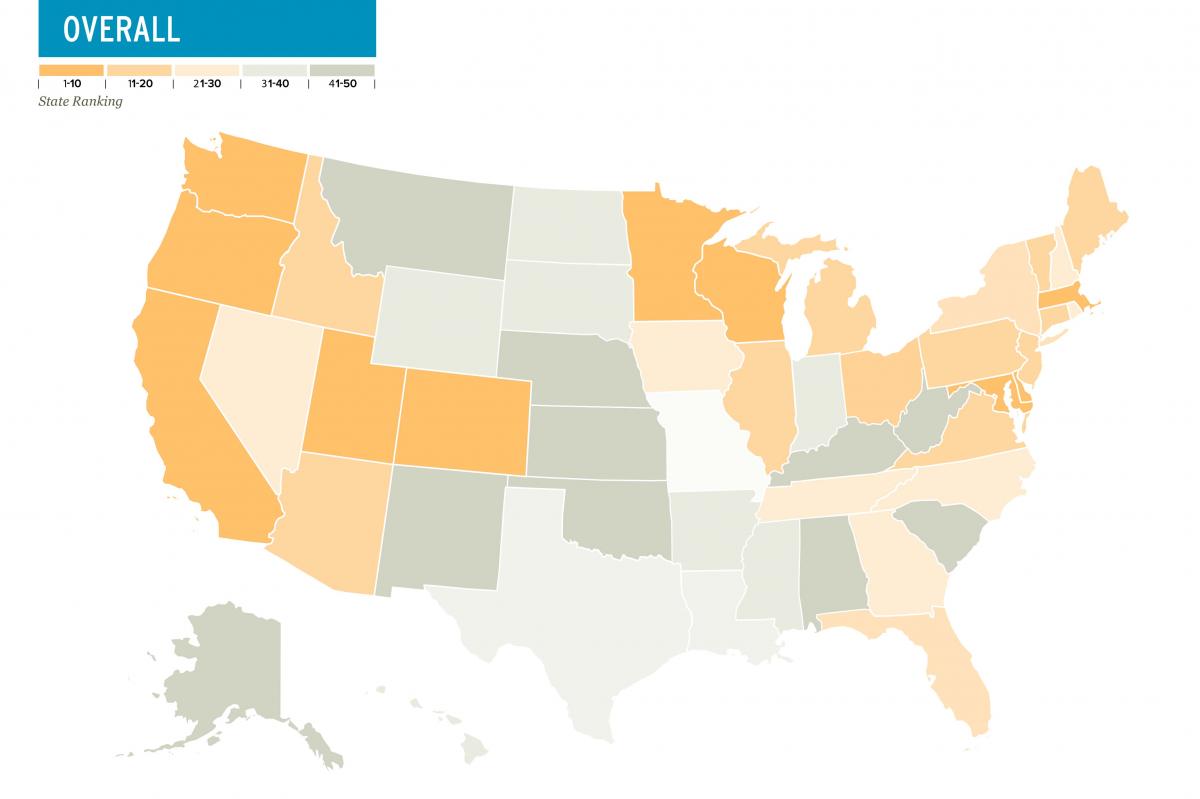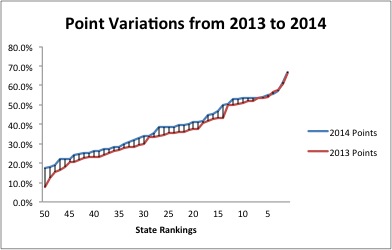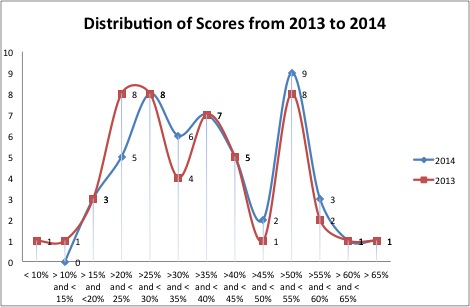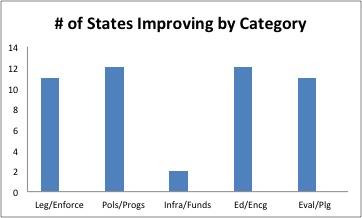DISCOVER YOUR LOCAL BICYCLING COMMUNITY
Find local advocacy groups, bike shops, instructors, clubs, classes and more!
BFS: Overall Trends in 2014
The Bicycle Friendly States ranking is now in its 7th year. Launched in 2008, it has undergone several iterations as we continue to strive to capture what makes a state bicycle friendly.
The last major revision to our process was in 2012, when the survey for our Bicycle Friendly State ranking was merged with the survey used for the Alliance for Biking and Walking’s Benchmarking Report. Due to this major revision, this blog only looks at data from the past two years.

When we talk about what makes a state more or less bicycle friendly we are concerned with the things that state decision makers can control. The beauty of a state’s scenery, the mildness of a state’s climate, and the pleasant demeanor of a state’s citizens are not a part of our rankings. Instead, we look at over 100 ways in which states can actively improve conditions for bicyclists through five categories of activities:
- Legislation & Enforcement
- Programs & Policies
- Infrastructure & Funding
- Education & Encouragement
- Evaluation & Planning
In the coming week we will look into how states have changed within these 5 categories, but today is about overall trends. The major trend that we can report is that conditions for cyclists are improving. Let me count the ways:
Overall points awarded are increasing

In the last year there has been a 7.7% increase in the total points awarded. Starting this year, we are reporting overall scores for each state, based on a weighted scoring of their answers that gives a percentage out of a possible 100 points. On average, it took 2.8 more points to earn the same ranking this year compared to last year. This improvement pushes all states to get better and compete if they want to be the most bicycle friendly. To stay the same in our rankings requires improvement.
Scores are primarily within two groups – a peloton and a breakaway?

This graph looks at the number of states falling within certain score ranges. Each vertical line corresponds to a 5 point increase in the score. From 2013 to 2014 there was a shift, to the right caused by the overall increase in scores. This shift is most pronounced at the low end of our scoring, as states that have not been bicycle-friendly in the past race to catch up. No state wants to fall off the back in the race to be the most bicycle-friendly and we can see a peloton of states forming around the 25-40 point range, lagging behind the breakaway at 50-55 points. Washington, the now 7-time Bicycle Friendly State champion, remains in its top position as the only state above 65 points. Here’s hoping next year we don’t have to strip it of its titles in the future.
States are doing better in some categories than others

We score categories on a scale of 1 to 5 based on quintiles of available points, with 1 meaning that less than 20% of available points were earned and 5 meaning that more than 80% of available points were earned. Two categories – Infrastructure & Funding and Evaluation & Planning – make up over 85% of all category scores of 1 and over 50% of all category scores of 2. This has been a persistent pattern and may show how it is easier to influence some state decisions and decision makers more than others.
In every category there was at least one state that improved, in most there were many

Improvement can happen anywhere and in most categories it could be found in many states, in states that have traditionally performed well and in those that have struggled. One of the things that states cannot control is how the federal government decides to fund our nation’s roadways. The lack of improvement in the Infrastructure & Funding category may represent slower spending in anticipation of the current federal transportation bill, MAP-21, expiring this year. We will continue to work hard to ensure that funding for bicycling is included in the next transportation bill and that states can utilize the broad eligibility of bicycling and walking projects in order to choose to invest in facilities for bicyclists and pedestrians.
Signs of Success are everywhere

Beginning last year, each state is given a customized report card with policy suggestions and more detailed scoring. For these report cards we developed 10 Signs of Success that can serve as shorthand tools for state decision makers and advocates who want to make their states more bicycle-friendly. In the last year 24 states have added a new Sign of Success. All states have at least 2 and the average state has 5. Even where states are struggling within a broader category, like Infrastructure & Funding, states are finding ways to have success, such as the 3 states that added dedicated state funding for bicycling in the last year.